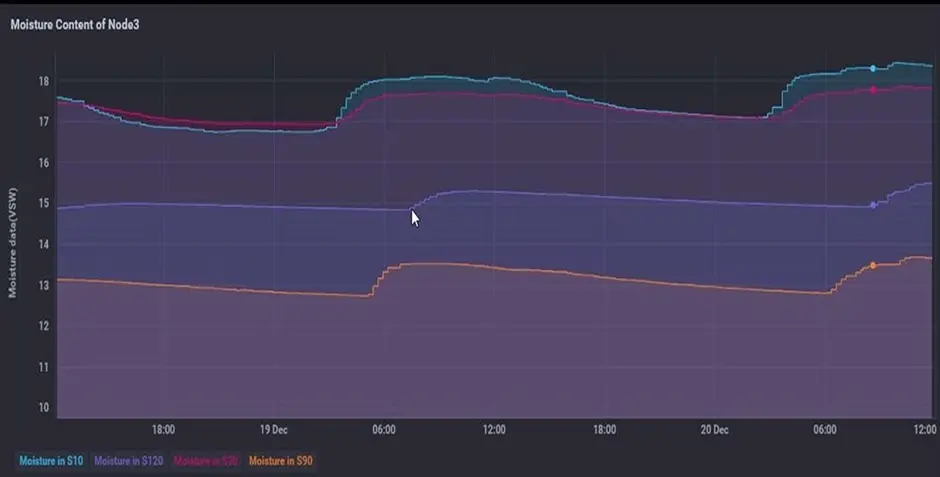Using IoT to manage parkland irrigation
OVERVIEW
PRODUCTS
LOCATION
What factors influence soil water content?
The optimisation of irrigation in parkland requires knowledge of the soil properties, plant characteristics, weather conditions and management practices. With this known, the Cairns Regional Council, in conjunction with Central Queensland University (CQU), commenced the Smart Urban Irrigation Project with the aim of optimising irrigation via the integration of best available irrigation equipment, real time monitoring data and the latest irrigation software.
To establish the benchmark measurements, Dual Electromagnetic (Dual-EM) surveys were undertaken to determine the soil moisture content. Additional infiltration measurements were also made, and these were used to classify park regions as low, medium, and high moisture zones.
Two parks, the Eastern Lagoon and Fogarty Park, were selected for intensive investigation. The grasses in these parks have shallow root systems (<20cm depth) due to compaction and low soil infiltration rate, and currently require frequent irrigation.
Selecting the correct soil moisture sensor
With this base knowledge, appropriate sensors and sensor locations can be determined, and subsequently installed at the correct depth.
In this case, The MP406 was chosen as the salinity of the soil required a sensor that was unaffected by soil salinity, and were installed as part of an SNiP-MP4 at 10, 30, 90 and 120cm depths.
Chosen for the ability to measure soil moisture content independently of the soil salinity, the MP406 is a robust sensor that is ideal for long term irrigation management. The sensor is also power efficient; with low power requirements, the MFR-NODE is capable of powering the sensor and transmitting the data from the MP406 sensors with an external battery for additional power. This hardware was housed in a subterranean junction box, preventing unauthorised access.
Communication and Dashboard
Using LoRaWAN, the data was transmitted via The Things Network (TTN) to a Chronograf dashboard (via nfluxDB database), hosted by the National eResearch Collaboration Tools and Resources (Nectar) Cloud.
The LoRaWAN solar powered, cellular connected gateway is located on the CQU rooftop in Cairns. The gateway and nodes were administered using The Things Network (TTN).
With the MFR-NODE secured in a subterranean junction box, the data was transmitted to the LoRaWAN network.
Once the data was received, the Chronograf dashboard visualised the data and sends alerts based on events extremely low or high moisture content. A machine learning system was also developed for automating the entire irrigation process to optimise water use.
Example of data
Data from dashboard showing how the MP406 sensors are responding to daily irrigation or rain on the 18th, 19th, 20th December 2019. The Data assisted the park manager with an ability to discern moisture content of selected soil layers (for example 10cm depth) so a decision can be made to judge if the park is under or over-irrigated.
This synopsis is based on reports from the project; further details can be found below:



